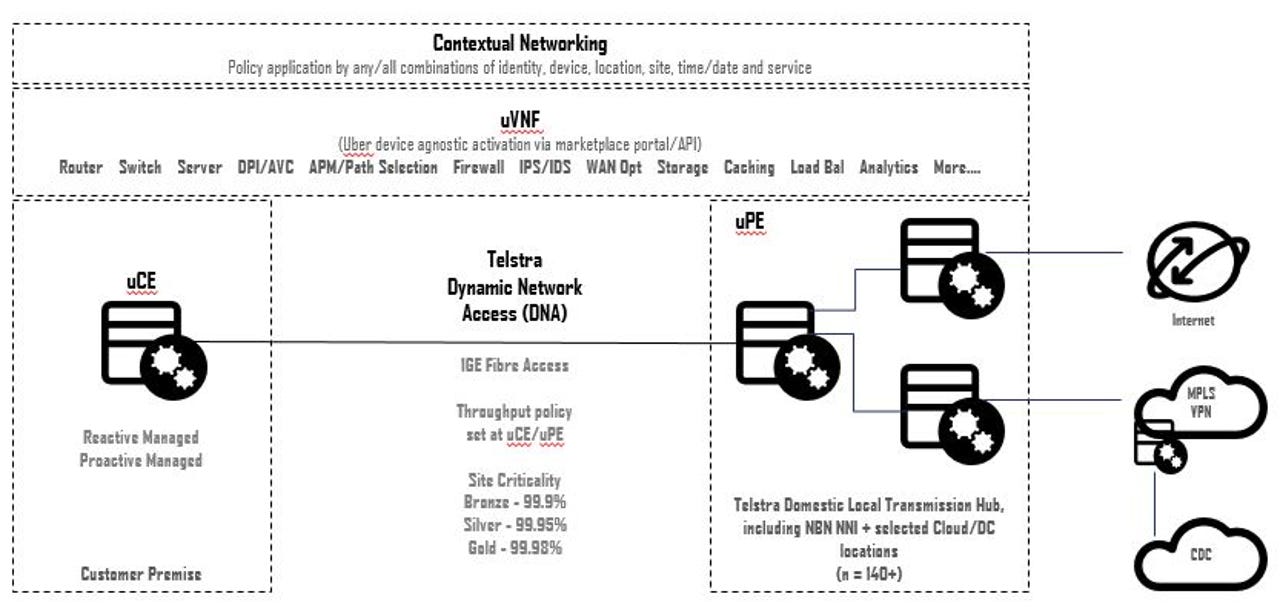Taking SD-WAN sexy to the core, the network core that is...
Anyone who has seen me discuss our Next IP tri-path and core router geo-diversity has witnessed a man getting very excited, some would argue disturbingly excited, about core networks.
Maybe this obvious core centric bias could explain my questioning the "lock-in" concerns re sourcing an "as a service/in-network" SD-WAN solution from a service provider.
This apparently least desirable model has been compared in various research notes to branch options based on either an overlay (new box behind old box) or replace (new box replacing old box) models with the outcome being a market view that the raft of options available make it increasingly likely any enterprise that wants to, can find the SD-WAN approach it needs.
Assuming SD-WAN is something customers want to do I am going to favour the as a service/in-network model as where service providers can do something different and take complexity away from the branch into a multi-tenanted core architecture. A summary of the model I have read recently:
"The advantages are obvious -- shrinking the branch stack to one box, ultimately, and making the WAN be what you want instead of overlaying what you want on top of it. The disadvantage is also obvious: You get tied to one service provider and lose the leverage and security of spreading the commitment across many; the provider becomes a single point of failure"
You can get to a version of the SD-WAN "holy grail" most quickly via the overlay model but I always question CPE vendor led trends playing on pricing arbitrage. Add to this global service providers looking for opportunities to turn their exchange networks into data centres e.g. AT&T CORD and the most advisable course of action for customers wanting to go down the SD-WAN path could be to wait a little while.
So, what do I think an "in-network" solution could look like? OK, let's go back a step to the "problem" we are trying to solve:
The prevailing market view is that the best network match to increasingly hybrid cloud sourced application environment is a hybrid MPLS/Internet WAN. Market adoption is being driven both from a commercial and application performance context. As a follow-on the market is also demanding more "cloud like", PAYG/consumption based network charging models
My idea:
A distributed PE based deployment of NFV platforms to steer traffic in close proximity to the customer site, combined with less feature heavy simplified CE devices. Implement shared port average utilisation based charging models consistent with consumption based/as a service requirements.
Maybe it could look a tad like this:

This new proposed core centric model not only introduces a new network element nomenclature "Uber" (read definition outstanding, supreme, awesome) but it is founded on applying policy at the most appropriate location, customer or provider premises, to deliver the best application experience, leveraging optimum economies of compute platform scale.
Yes, it's a network feature and function "cloud" delivering a better, more policy-driven network experience for our customers - what do you think?
For more networking, go to Telstra Exchange.